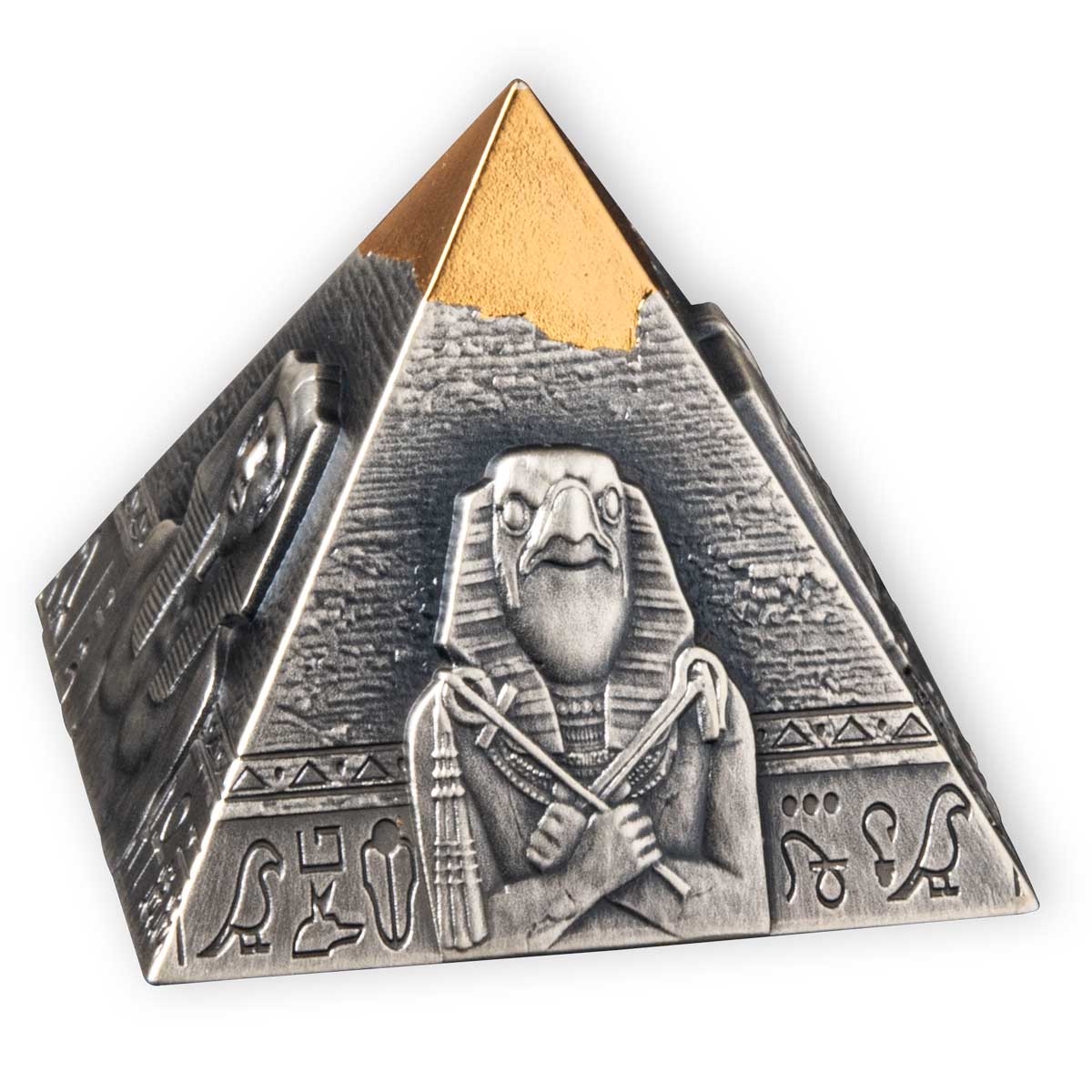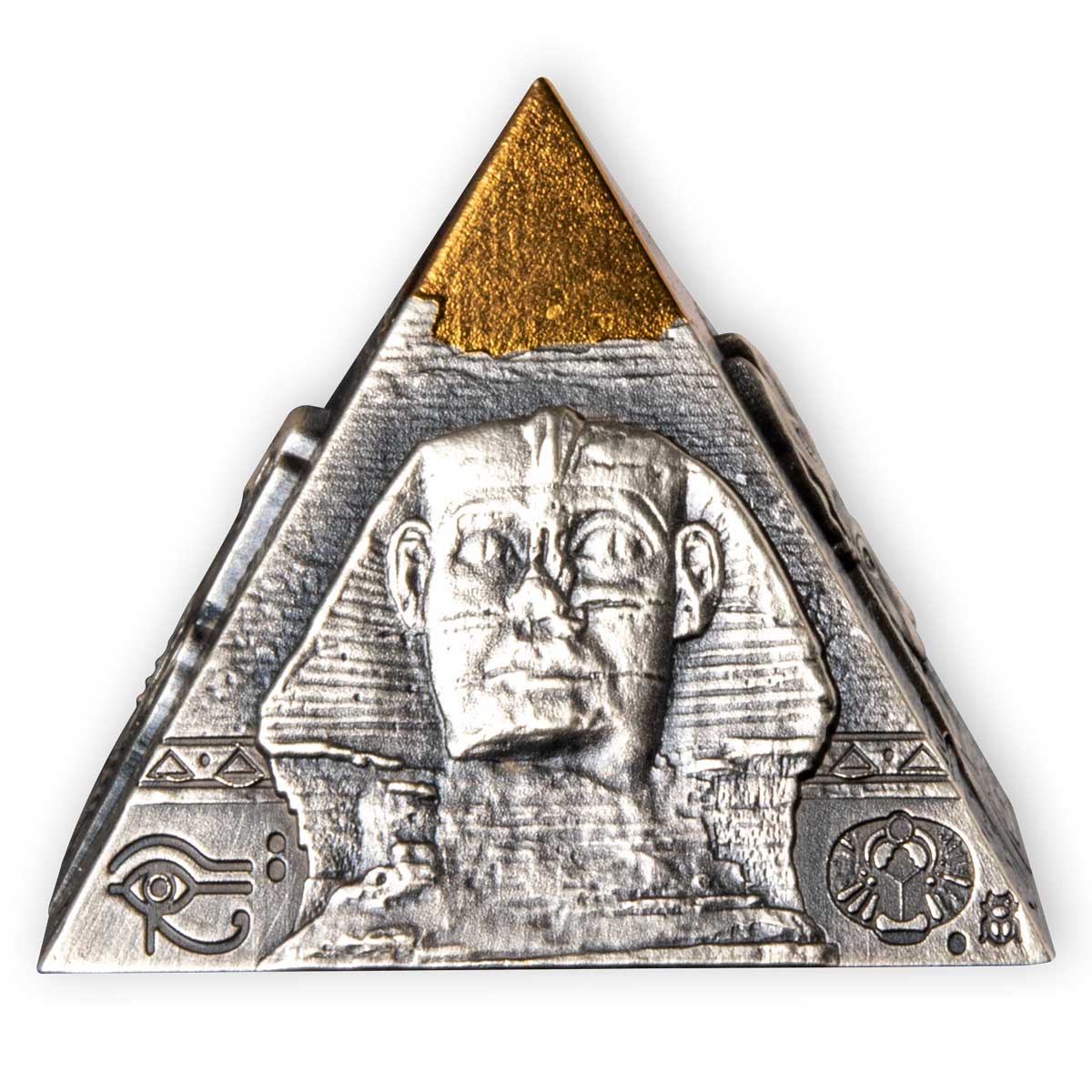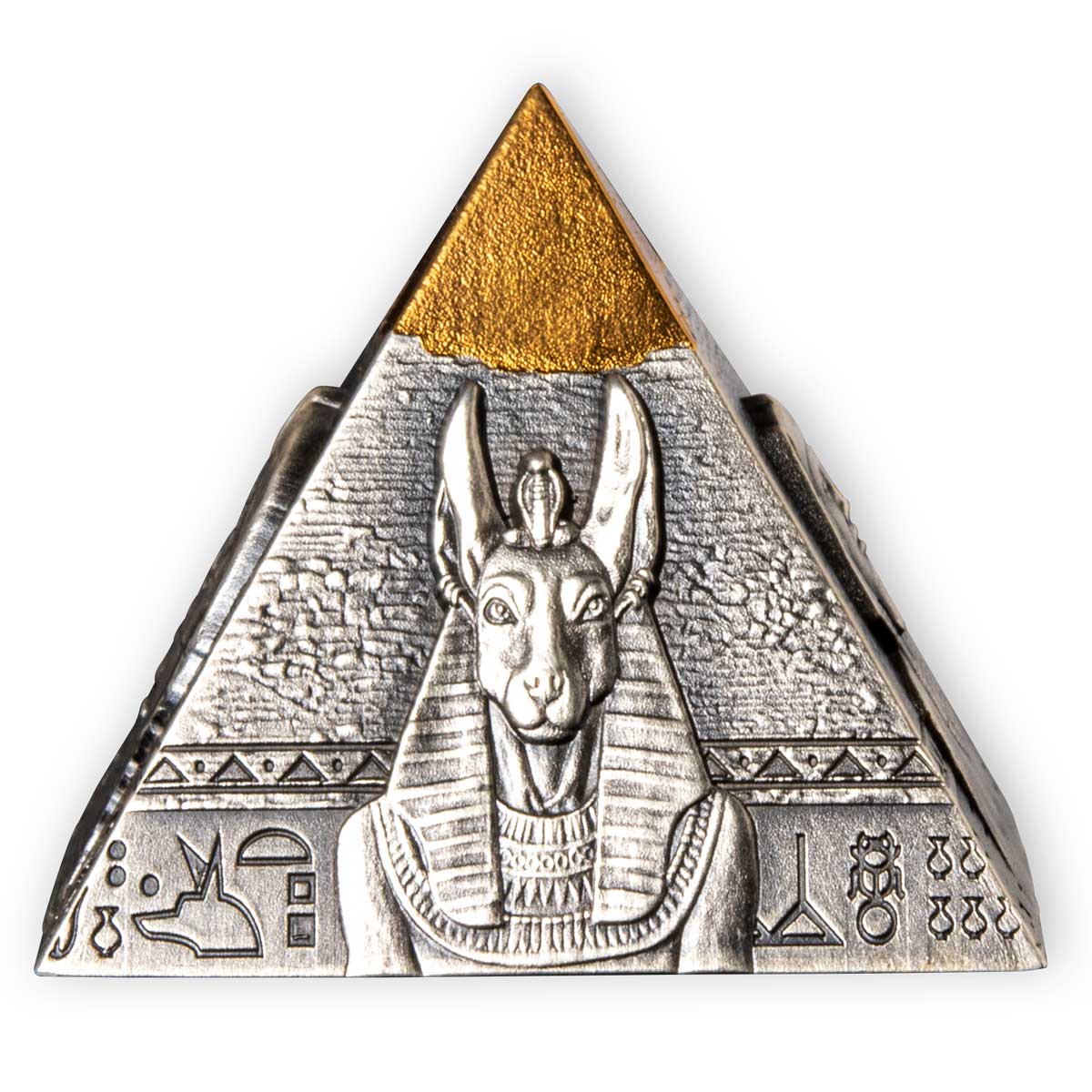MDM brings the Pharoah Khufre’s magnificent tomb to dimensional life with a new silver pyramidal coin
The pyramids on the Giza plateau in Egypt are rightfully considered wonders of human ingenuity, which have for thousands of years evoked a sense of awe in those that have seen them. That these structures, and the civilisation that erected them, have been a staple of the numismatic world for years, should come as no surprise. There have been some beautiful modern coin issue on the subject, employing some of the best producers in the business, but new and interesting issues are still possible. Like this one.
Dimensional coins have become more common as minting technology has improved. Such issues as Numiscollect’s new range have showcased Egyptian art, and the Mint of Poland had a geometric dimensional pyramidal coin on the market back in 2014, but MDM have incorporated many of the new advances to make their own addition to the genre. This one is also basiclly pyramidal in shape, but is covered with high-relief detail.
To start at the top, the gilded area on the coin isn’t a random placement, but coincides with the remaining section of the pyramid face still covered with original casing stones. A nice touch. Below that and under an antique finish, are some depicted elements associated with it. One face has the head of the Sphinx, another the god Anubis, another the god Ra, and the last, the Pharoah Khafre himself. Each pops from its face in high relief, with the background covered in Egyptian iconography and a view of the pyramid.
The base of the coin has more hieroglyphic imagery on it, with the coat of arms of Djibouti at the centre. This is also antique finished. Packaging comprises of a gold-coloured pyramid box covered in icons and suits it well. It weighs in at five ounces of fine silver, and is around 36 mm in size. The mintage is set at 750 pieces. A very nice piece indeed, with a carefully thought out design and a fine implementation. A coin that any budding Egyptologist would love to have in their collections. Available to order now, it should ship in November.
THE PYRAMID OF KHAFRE
It is Khufu’s pyramid that has attracted the most attention, but that does nothing to diminish the structure built to house the earthly remains of the Pharoah Khafre – the second biggest pyramid at Giza. Ruling from 2558 to 2532 BCE in the Fourth Dynasty, Khafre was actually Khufu’s son and there is some concensus amongst archaeologists that the iconic Sphinx was built for him. He was described by the Greek historians Herodotus and Diodorus as a ‘cruel and heretical ruler’, but they were writing 2,0o0 years later, so hardly a definitive view.
The pyramid is 215.5 m along its base and stands 136.4 m in height, rising at a 53° 13′ angle, which is slightly steeper than its bigger relative. Because the bedrock underneath the pyramid is 10 m higher, it seems to be taller than the Khufu pyramid, perhaps a way to appear bigger without actually being so.
Like most Ancient Egyptian tombs, this one was looted in antiquity, likely in the First Intermediate Period around 300 years later. Even Rameses II ordered some casing stones taken from the pyramid to help build his temple in Heliopolis. The bulk of the rest were apparently still in place in the mid-17th century, but are gone now.The pyramid is built of horizontal courses with larger stones at the bottom, becoming smaller as it rises. The base level of casing stones were built of pink granite, transitioning to Tula limestone above that. The top third is still in place today, although the pyramidion is missing.
There are two entrances to the pyramid, one opening over 11.5 m above ground level, and the other at the base. Both are offest around 12 m to the east of the centreline, with the upper one being formed as the pyramid was built, and the lower one being carved into the bedrock. The reason for the offset is not known, but it may be that the original design was for a larger pyramid that could have dwarfed Khufu’s.
The burial chamber was carved out of a pit in the bedrock, and was 14.15 x 5 m in size, orientated east-west. The sarcophagus was carved out of a solid block of granite and sat in a pit in the floor. Despite that, there are no inscriptions anywhere within, and it has been argued that Khafre was never actually interred in the pyramid.
| SPECIFICATION | |
| DENOMINATION | 250 Francs (Djibouti) |
| COMPOSITION | 0.999 silver |
| WEIGHT | 155.5 grams |
| DIMENSIONS | 36 x 36 x 30.2 mm |
| FINISH | Antique |
| MODIFICATIONS | Fully dimensional, gilding |
| MINTAGE | 750 |
| BOX / C.O.A. | Yes / Yes |










Leave A Comment